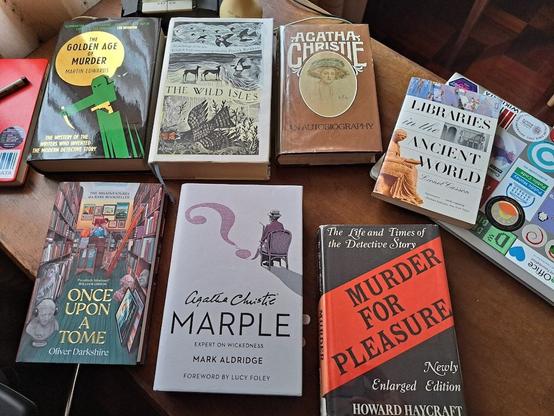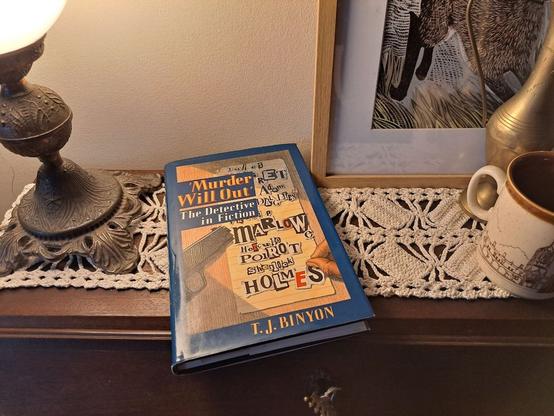Non-fiction November: choosing non-fiction
I just found out about #NonFictionNovember through Liz Dexter from Libro Full Time, hosted by Frances Spurrier at Volatile Rune. Each week has a theme to encourage you to read more non-fiction and this one is “choosing non-fiction”.
I realised that when I choose non-fiction to read (that is not for work), I usually tied it up to my fiction favourite readings. The picture above is a good example of this:
- Books about books, libraries, booksellers, and the history of the book and reading;
- Books about specific books or characters. Besides Aldridge’s Marple and Poirot, I could add Osborne’s The Life and Times of Agatha Christie, Poirot and Marple biographies of Anne Hart, companions, etc.;
- Books about genres or subgenres, either as history or as a collection of essays. To Murder for Pleasure and The Golden Age of Murder, I could add HowDunnit, essays by The Detection Club members, Bloody Murder by Julian Symons, The Life of Crime by Martin Edwards, and others;
- Autobiographies and biographies, to which I could add other authors like Austen, the Brontes, and Trollope;
- More recently, I’ve been adding nature writing books to my TBR, of which The Wild Isles is a good example (it’s an anthology), but I could also add Angela Harding’s A Year Unfolding or A Nature Diary by Richard Adams.
This November, I’m reading Murder Will Out by T. J. Binyon. The book goes through several detectives, dividing its chapters through the different types of detectives: the professional amateur, the amateur amateur, the police, etc.. Binyon describes the differences between these characters when they belong to the same category and talks about the books and their creators so one can get an historical perspective or even see the evolution of the detective.
Now, back to you, do you read non-fiction by choice? And do you choose it?
#books #BooksAboutBooks #ClassicMystery #CrimeFiction #DetectiveFiction #livros #NatureWriting #NonFictionNovember #NonFictionNovember #readings

